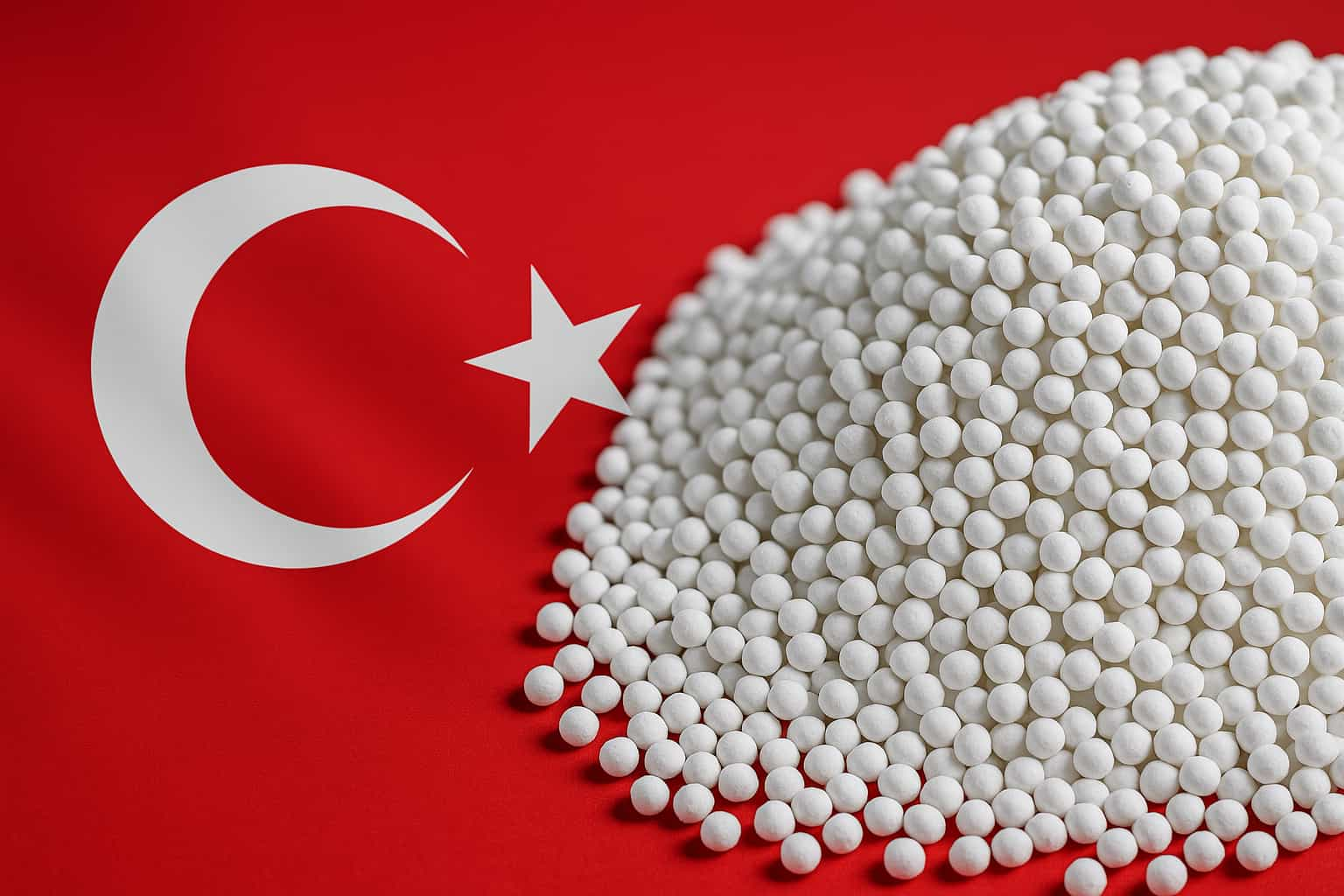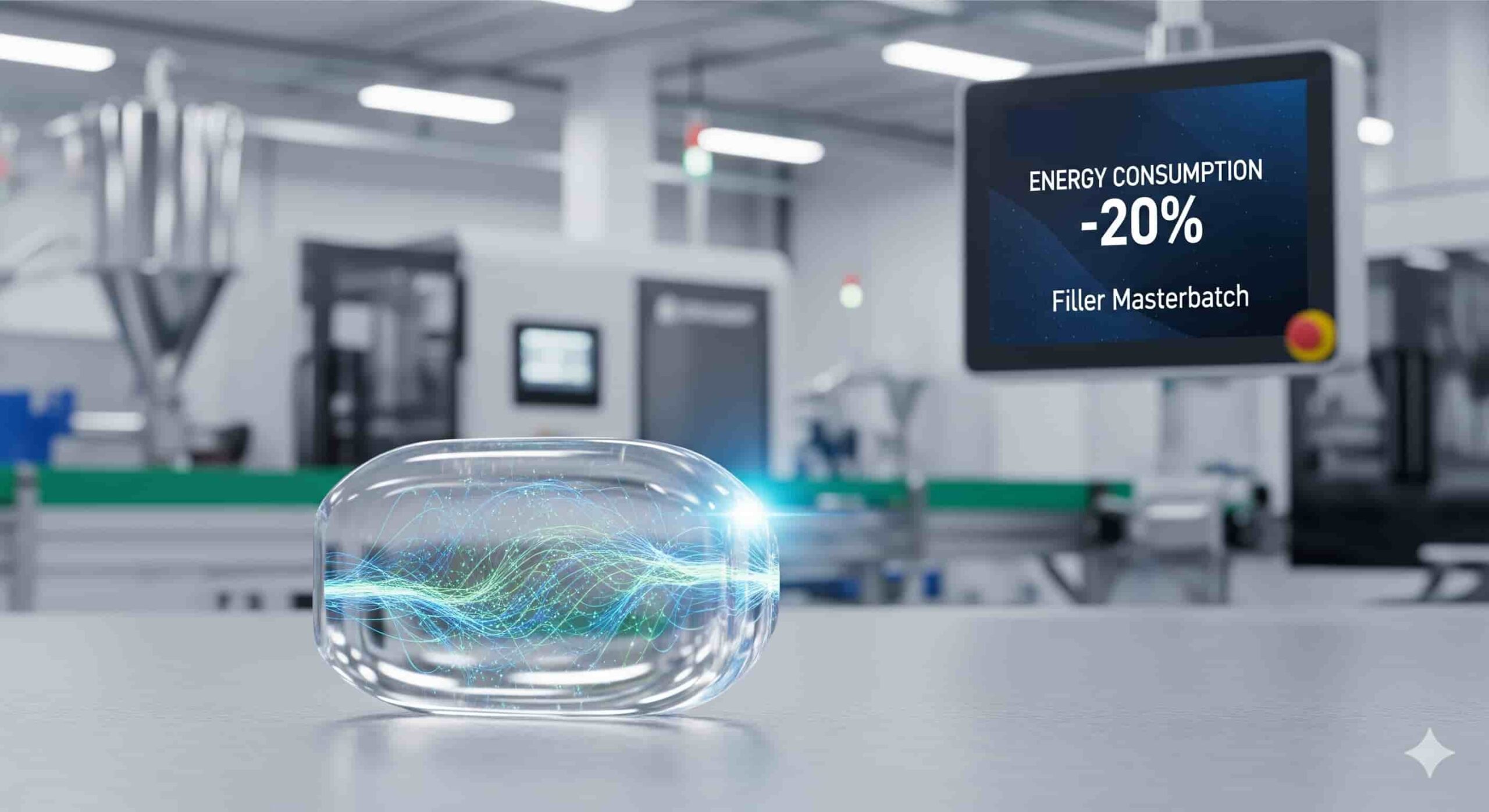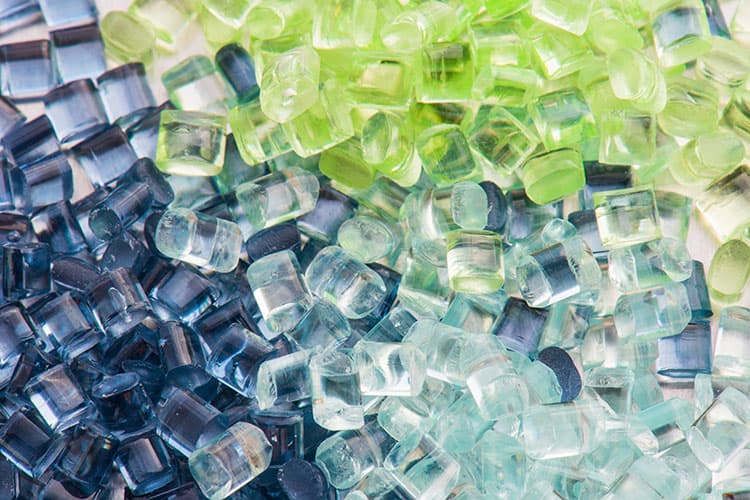EuP Egypt’s filler masterbatch cuts non woven fabric production costs by up to 40%, enhances tensile strength by 25%, and supports sustainable manufacturing for hygiene, medical, and agricultural applications. Request a free sample today to optimize your production line.
In today’s competitive manufacturing landscape, non woven fabric producers face pressure to balance cost, quality, and sustainability. Filler masterbatch—a blend of calcium carbonate (CaCO₃), polymer resin (e.g., polypropylene or polyethylene), and specialized additives—offers a proven solution. According to a 2024 Plastics Industry Report, fillers can reduce raw material costs by up to 20% while improving fabric performance.
EuP Egypt, a global leader with 17 years of experience in masterbatch production, delivers PP filler masterbatch tailored for non woven textiles. Our products serve over 100 countries, meeting the needs of industries like hygiene (diapers, masks), medical textiles (gowns, drapes), and bags. Certified by REACH, RoHS, and FDA, our fillers ensure compliance and reliability.
This article explores how EuP Egypt’s filler masterbatch enhances non woven fabric production, reduces costs, and supports sustainability goals, backed by real-world data and expert insights.
Authored by Dr. Tuong Nguyen, Lead Polymer Scientist at EuP Egypt, with 10 years of experience in masterbatch formulation. Reviewed by our technical team for accuracy.
1. What Is Filler Masterbatch for Non Woven Fabrics?
Filler masterbatch is a plastic additive made by combining calcium carbonate with a carrier resin like polypropylene (PP) or polyethylene (PE), along with other performance-enhancing additives. It’s widely used in the production of non woven materials—not just to save on cost, but to actually improve the quality and processability of the end product.
Filler masterbatch for non woven are especially valuable in industries like:
- Hygiene (baby diapers, sanitary napkins, face masks)
- Medical textiles (disposable gowns, surgical drapes)
- Packaging (Bags)
By acting as a non woven material enhancer, filler masterbatch ensures the fabric not only meets the required specs—but also remains competitive in today’s cost-sensitive markets.

2. Benefits of Using Filler Masterbatch for Non Woven Fabrics
For non woven manufacturers, success hinges on balancing cost, performance, and process efficiency. That’s exactly where filler masterbatch delivers measurable value on the production floor.
1. Cost Efficiency
By replacing 40–50% of virgin resin with calcium carbonate filler, you can significantly lower raw material costs. And thanks to EuP Egypt’s precise formulation, you still get reliable fabric performance.
2. Enhanced Mechanical Properties
The filler doesn’t just stretch your budget — it also strengthens your product. Expect improved tensile strength, tear resistance, and rigidity in your non woven fabrics, making them suitable for more demanding applications.
3. Improved Processability
Our filler boosts thermal conductivity, which means faster heat transfer, quicker production cycles, and smoother operations overall. This is especially helpful for high-volume, continuous runs.
4. Eco-Friendly Advantages
Using less virgin resin reduces fossil fuel consumption by 15% and CO2 emissions by 12% (2024 lifecycle analysis). Our BioMates biodegradable filler supports EU Circular Economy goals, ideal for eco-conscious brands.
When you want to optimize cost without compromising quality or efficiency, EuP Egypt’s masterbatch offers the practical solution you’ve been looking for.

3. How EuP Egypt’s Filler Masterbatch Enhances Non Woven Fabric Quality?
In non woven fabric production, consistency and end-user performance are just as important as production speed or cost. That’s where EuP Egypt’s filler masterbatch makes a clear impact — it helps elevate the quality of your final product in ways your customers will notice.
3.1 Uniform Fabric Structure
Our filler masterbatch helps maintain a stable fabric thickness and weight, which is essential for products like medical gowns or baby diapers. No weak spots. No variations that affect functionality.
3.2. Better Surface Finish
PP non woven fabrics made with our filler exhibit smoother, more uniform surfaces. That means better printability for logos, product info, or brand designs — a major plus for hygiene or retail products.
3.3. Enhanced Fabric Feel
By using high-purity calcium carbonate and carefully selected additives, EuP Egypt’s masterbatch improves the hand-feel of the fabric. The result? A product that feels soft yet durable — ideal for applications like wipes, masks, or apparel linings.
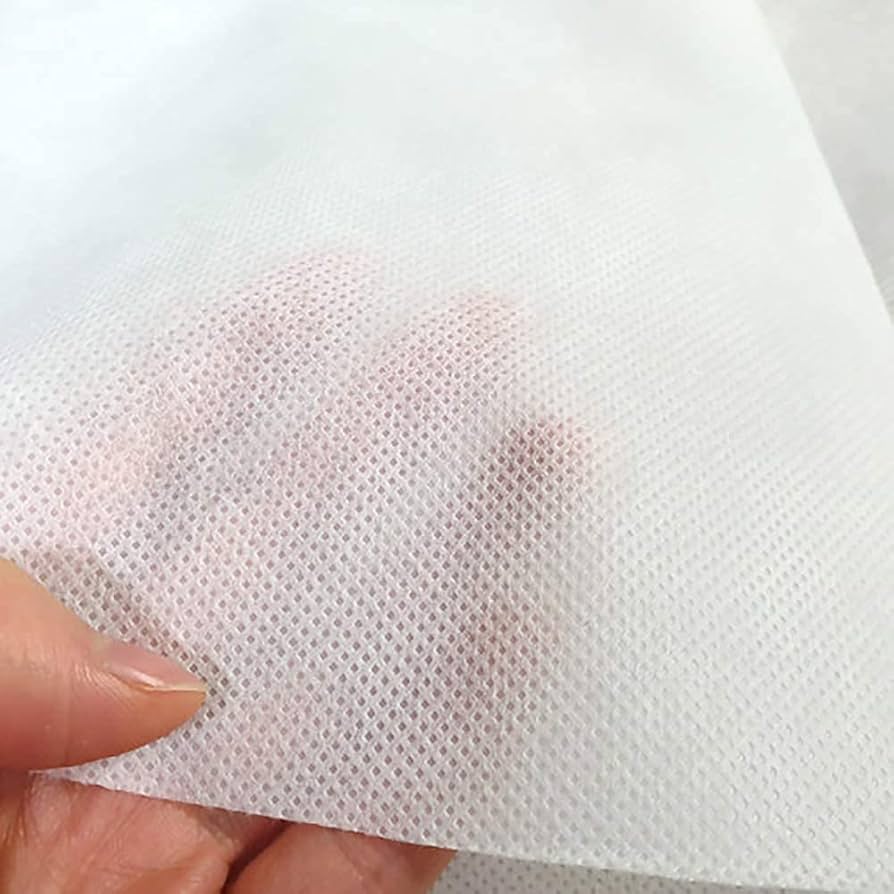
3.4. Long-Term Fabric Stability
Durability matters, especially in outdoor or medical use. Our formulations support excellent non woven durability — helping the fabric resist tearing, sagging, or deformation during use and storage.
Whether you’re manufacturing non woven hygiene products or technical fabrics, EuP Egypt’s filler masterbatch gives your end product the polish, stability, and performance edge that customers demand.
4. How Much Filler Masterbatch for Non Woven Fabric Production Should You Use?
In most non woven applications, filler loading typically ranges between 5% to 35%, depending on what you’re making.
- For soft hygiene products, a lower filler ratio keeps the fabric flexible and breathable.
- For nonwoven bags, a higher filler content (20-35%) can improve strength and stiffness while reducing cost.
The key is balance — too little and you miss out on savings, too much and you may compromise performance. That’s where the expertise of a trusted partner matters.
Table: Recommended Filler Ratios by Application
| Application | Filler Ratio | Benefits |
| Diapers/Masks | 10–20% | Softness, breathability |
| Non Woven Bags | 20–30% | Cost savings, printability |
5. Best Practices for Integrating Filler Masterbatch in Non Woven Production
To get the best results from filler masterbatch, it’s not just about choosing the right product — it’s about how you use it. Proper integration into your production line ensures consistent quality, smooth processing, and fewer issues down the road.
1. Mix It Right
Uniform dispersion is key. Whether you’re using calcium carbonate masterbatch or a biodegradable filler like BioMates, make sure it’s evenly mixed with the base resin before feeding into the extruder. Inconsistent mixing can lead to defects like uneven fabric thickness or weak spots.
2. Keep Moisture Under Control
Most masterbatches — especially those containing CaCO₃ — can absorb moisture during storage. Always dry the masterbatch properly before processing to avoid problems like bubbling, poor bonding, or fabric inconsistency.
3. Optimize Processing Temperatures
Filler-loaded compounds may behave slightly differently from pure resin. Be ready to adjust temperature settings during extrusion or calendaring to maintain stable flow and consistent output. Our team at EuP Egypt can provide recommended settings based on your exact formulation.
4. Start Small, Then Scale
If you’re new to using filler masterbatch, it’s smart to start with a small trial batch (eg., 5% filler ratio). This gives your team a chance to observe how it behaves in your line and fine-tune the ratio for your specific product.
At EuP Egypt, we don’t just ship product — we guide you through the process. Our technical experts offer personalized masterbatch processing guides to ensure a smooth transition and maximum efficiency at every step of production.
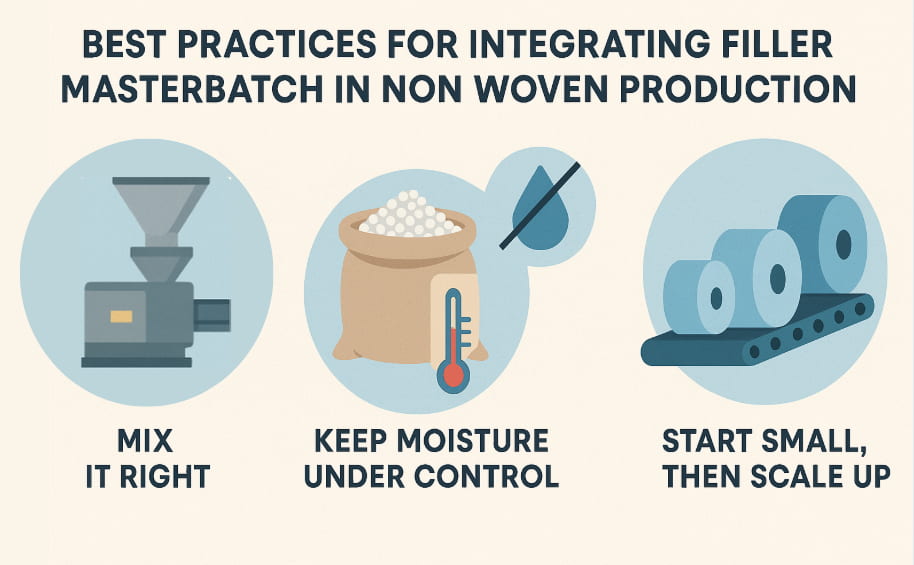
6. Sustainability and Environmental Impact of Filler Masterbatch
In today’s non woven industry, sustainability is no longer just a trend — it’s a necessity. From hygiene brands to agricultural manufacturers, more companies are looking for ways to reduce their environmental impact. One effective step? Switching to filler masterbatch to cut down on virgin resin usage.
By replacing a portion of traditional plastic resin with calcium carbonate filler, manufacturers can lower their carbon footprint. Less polymer means fewer fossil resources consumed and less greenhouse gas emitted throughout the production lifecycle. This shift supports a more green non woven production model — without sacrificing product performance.
But at EuP Egypt, we take it even further.
For businesses that want to go beyond conventional plastics, EuP Egypt offers BioMates — a biodegradable filler masterbatch designed for non woven and bioplastic applications.
Whether you’re making packaging or disposable fabrics, EuP Egypt’s filler masterbatch — including BioMates — gives you the tools to create a cleaner, more competitive product.
7. Case Studies: Proven Success with EuP Egypt’s Filler Masterbatch in Non-Woven Productions
Nothing speaks louder than real-world results. Across different markets and applications, EuP Egypt’s filler masterbatch has helped manufacturers optimize cost, improve quality, and deliver consistently high-performing non woven products.
Case study 1: Non-Woven Napkin Manufacturer in UAE
A leading sanitary napkin producer reduced PP resin use by 30% with EuP Egypt’s PP filler masterbatch, saving 15% on costs ($50,000 annually for 10 million units). The fabric maintained softness and achieved a 20% increase in tear resistance.
“EuP Egypt’s filler transformed our cost structure without sacrificing quality.” — Fatima Al-Sayed, Production Manager, UAE Hygiene Co.
Case Study 2: Non-Woven Bag Manufacturer in Egypt
A non woven bag producer in Egypt needed to lower production costs without compromising strength and print quality. By integrating EuP’s PP filler masterbatch, they cut down on raw material usage by 40% and achieved better fabric stiffness and thickness control — leading to improved bag durability and print quality for branded bags.
“EuP Egypt helped us stay competitive in a tough market.” — Mohamed Hassan, Factory Owner, Cairo.

8. Why choose EuP Egypt’s Filler Masterbatch?
When it comes to choosing a filler masterbatch partner, consistency, experience, and global reliability matter just as much as the product itself. That’s why so many manufacturers around the world trust EuP Egypt.
With over 17 years of experience in the plastic and filler masterbatch industry, we’re more than just a supplier — we’re a long-term partner for non woven fabric producers across 100+ countries. Our deep understanding of both global market demands and local production challenges allows us to deliver solutions that work — wherever you are.
What Sets Us Apart?
- High-Purity Materials: We use only top-grade calcium carbonate and proven additive systems to ensure consistent product quality.
- Global-Standard Certifications: Our filler masterbatch complies with international benchmarks like REACH, RoHS, and FDA, giving manufacturers peace of mind in regulated sectors.
- Reliable Supply Chain: With our strategic location in Egypt and strong logistics network, we guarantee timely delivery and stable supply, even for large-volume orders.
- Tailored Technical Support: Whether you need guidance on filler ratios or help troubleshooting a production line, our team is just a call or message away.
From standard PP filler masterbatch to biodegradable options like BioMates, EuP Egypt continues to lead with innovation, trust, and customer focus — making us a top choice for any manufacturer looking for a trusted masterbatch manufacturer and non woven filler supplier.

9. Industry Trends and Innovations in Filler Masterbatch for Non Woven Fabrics
The non woven fabric industry is evolving fast — and so are the materials behind it. As demand grows for better performance, sustainability, and cost control, filler masterbatch technology is stepping up with new innovations that help manufacturers stay competitive.
Smarter Additive Integration
Modern filler masterbatches now go beyond basic calcium carbonate. More producers are integrating functional additives like UV stabilizers, anti-bacterial agents, and flame retardants into their masterbatch blends. This not only simplifies the production process but also enhances fabric functionality — especially for medical or outdoor applications.
Rise of Biodegradable Solutions
With global pressure to reduce plastic waste, more manufacturers are shifting toward biodegradable fillers. EuP Egypt’s BioMates, for example, supports this trend by combining bioplastic with modified CaCO₃ to create a filler masterbatch that lowers environmental impact without raising costs. It’s a perfect fit for brands aiming for green non woven production.
Automation and Data-Driven Production
As production lines become more automated, the demand for highly consistent, easy-to-process masterbatch is increasing. Manufacturers need fillers that maintain flow stability, reduce downtime, and support high-speed manufacturing — all of which EuP Egypt’s advanced masterbatch solutions are designed to deliver.
Lightweighting and Efficiency
Another trend is fabric lightweighting — using thinner, lighter materials without compromising strength. High-performance fillers are helping achieve this by improving fabric stiffness and process control, enabling manufacturers to do more with less.
At EuP Egypt, we’re constantly developing advanced masterbatch solutions that align with where the industry is headed — helping our partners not just keep up, but lead.
10. FAQs About Filler Masterbatch for Non Woven Fabric Production
- What is the ideal filler ratio for non woven fabric?
The optimal ratio depends on the application. For hygiene products, 10–30% is common to maintain softness and breathability. For bags or technical non wovens, ratios up to 40–50% are possible with EuP Egypt’s PP filler masterbatch. - Will using filler affect the fabric’s strength?
Not if you choose the right masterbatch. EuP Egypt’s filler is engineered to enhance mechanical properties like tensile strength and rigidity while replacing resin. In fact, many customers report stronger final products. - How does filler masterbatch impact fabric appearance?
High-quality filler can actually improve appearance. It helps achieve better opacity, surface smoothness, and printability — especially important for non woven bags and branded items. - Can filler masterbatch be used with bioplastics?
Yes. EuP Egypt’s BioMates is a biodegradable filler masterbatch specifically developed for non woven bioplastic applications, offering cost savings and improved film characteristics. - What technical support is available?
We offer tailored guidance for each client — from choosing the right non woven filler, to adjusting process temperatures, drying conditions, and optimizing filler ratios. Our team works closely with your production staff to ensure smooth integration.
Still have questions? Reach out to the EuP Egypt technical team — we’re here to help.
11. Conclusion
In today’s competitive market, finding the right balance between quality, sustainability, and cost is key. With EuP Egypt’s filler masterbatch for non woven fabric, manufacturers gain a proven solution that does all three.
Whether you’re producing hygiene products, non woven bags, or exploring green alternatives with BioMates, EuP Egypt delivers performance-driven filler solutions backed by deep expertise and global trust.
👉 Ready to enhance your non woven production?
Contact EuP Egypt today for customized masterbatch solutions or visit our website to learn more.
Build better. Spend smarter. Choose EuP Egypt.
About EuP Egypt: Based in Cairo, EuP Egypt is a global leader in masterbatch solutions, serving 100+ countries. Learn more at www.eupegypt.com/about-us/


